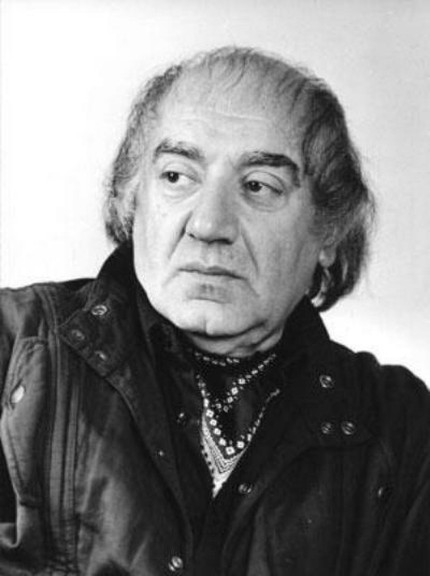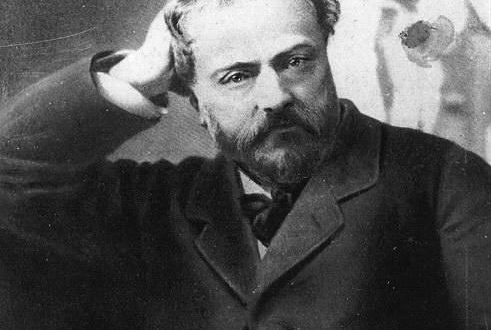
Avet Rubenovich Terterian (Avet Terterian) |
Terterian Avet

… Avet Terteryan is a composer for whom symphonism is a natural means of expression. K. Meyer
Truly, there are days and moments that psychologically and emotionally outweigh many and many years, become some kind of turning point in a person’s life, determine his fate, occupation. For a twelve-year-old boy, later the famous Soviet composer Avet Terteryan, the days of the stay of Sergei Prokofiev and his friends in the house of Avet’s parents, in Baku, at the end of 1941, became so short, but intense. Prokofiev’s manner of holding himself, talking, expressing his opinion openly , definitely clear and start every day with work. And then he was composing the opera “War and Peace”, and in the morning the stunning, brilliant sounds of music rushed from the living room, where the piano stood.
The guests left, but a few years later, when the question arose of choosing a profession – whether to follow in the footsteps of his father to a medical school or choose something else – the young man firmly decided – to a music school. Avet received his primary musical education from a family that was extremely musical – his father, a well-known laryngologist in Baku, from time to time was invited to sing the title roles in the operas by P. Tchaikovsky and G. Verdi, his mother had an excellent dramatic soprano, his younger brother Herman subsequently became a conductor.
The Armenian composer A. Satyan, the author of widely popular songs in Armenia, as well as the well-known teacher G. Litinsky, while in Baku, strongly advised Terteryan to go to Yerevan and seriously study composition. And soon Avet entered the Yerevan Conservatory, in the composition class of E. Mirzoyan. During his studies, he wrote the Sonata for Cello and Piano, which was awarded a prize at the republican competition and at the All-Union Review of Young Composers, romances on the words of Russian and Armenian poets, the Quartet in C major, the vocal-symphonic cycle “Motherland” – a work that brings him a real success, awarded the All-Union Prize at the Young Composers Competition in 1962, and a year later, under the direction of A. Zhuraitis, it sounds in the Hall of Columns.
Following the first success came the first trials associated with the vocal-symphonic cycle called “Revolution”. The first performance of the work was also the last. However, the work was not in vain. The remarkable verses of the Armenian poet, the singer of the revolution, Yeghishe Charents, captured the composer’s imagination with their powerful force, historical sound, publicistic intensity. It was then, during the period of creative failure, that an intense accumulation of forces took place and the main theme of creativity was formed. Then, at the age of 35, the composer knew for sure – if you don’t have it, you shouldn’t even engage in composition, and in the future he will prove the advantage of this view: his own, main theme … It arose in the merger of the concepts – Motherland and Revolution, dialectical awareness of these quantities, dramatic the nature of their interaction. The idea to write an opera imbued with the high moral motives of Charents’ poetry sent the composer in search of a sharp revolutionary plot. The journalist V. Shakhnazaryan, attracted to work as a librittist, soon suggested – B. Lavrenev’s story “Forty-First”. The action of the opera was transferred to Armenia, where in the same years revolutionary battles were going on in the mountains of Zangezur. The heroes were a peasant girl and a lieutenant from the former pre-revolutionary troops. Charents’ passionate verses were heard in the opera by the reader, in the choir and in solo parts.
The opera received a wide response, was recognized as a bright, talented, innovative work. A few years after the premiere in Yerevan (1967), it was performed on the stage of the theater in Halle (GDR), and in 1978 it opened the International Festival of G. F. Handel, which is held annually in the composer’s homeland.
After creating the opera, the composer writes 6 symphonies. The possibility of philosophic comprehension in the symphonic spaces of the same images, the same themes especially attracts him. Then the ballet “Richard III” based on W. Shakespeare, the opera “Earthquake” based on the story of the German writer G. Kleist “Earthquake in Chile” and again the symphonies – Seventh, Eighth – appear. Anyone who has at least once carefully listened to any symphony of Terteryaia will later easily recognize his music. It is specific, spatial, requires focused attention. Here, each emerging sound is an image in itself, an idea, and we follow with unflagging attention its further movement, as the fate of a hero. The sound imagery of the symphonies reaches almost stage expressiveness: the sound-mask, the sound-actor, which is also a poetic metaphor, and we unravel its meaning. Terteryan’s works encourage the listener to turn their inner gaze to the true values of life, to its eternal sources, to think about the fragility of the world and its beauty. Therefore, the poetic peaks of Terterian’s symphonies and operas always turn out to be the simplest melodic phrases of folk origin, performed either by the voice, the most natural of the instruments, or by folk instruments. This is how the 2nd part of the Second Symphony sounds – a monophonic baritone improvisation; an episode from the Third Symphony – an ensemble of two duduks and two zurns; the melody of the kamancha that permeates the entire cycle in the Fifth Symphony; dapa party in the Seventh; at the sixth peak there will be a choir, where instead of words there are the sounds of the Armenian alphabet “ayb, ben, gim, dan”, etc. as a kind of symbol of enlightenment and spirituality. The simplest, it would seem, symbols, but they have a deep meaning. In this, Terteryan’s work echoes the art of such artists as A. Tarkovsky and S. Parajanov. What are your symphonies about? listeners ask Terteryan. “About everything,” the composer answers, leaving everyone to understand their content.
Terterian’s symphonies are performed at the most prestigious international music festivals – in Zagreb, where a review of contemporary music is held every spring, at the “Warsaw Autumn”, in West Berlin. They also sound in our country – in Yerevan, Moscow, Leningrad, Tbilisi, Minsk, Tallinn, Novosibirsk, Saratov, Tashkent … For a conductor, Terteryan’s music opens up the opportunity to use his creative potential as a musician very widely. The performer here seems to be included in co-authorship. An interesting detail: symphonies, depending on the interpretation, on the ability, as the composer says, to “listen to the sound”, can last for different times. His Fourth Symphony sounded both 22 and 30 minutes, the Seventh – and 27 and 38! Such an active, creative collaboration with the composer included D. Khanjyan, a wonderful interpreter of his first 4 symphonies. G. Rozhdestvensky, in whose brilliant performance the Fourth and Fifth were sounded, A. Lazarev, in whose performance the Sixth Symphony sounds impressively, written for chamber orchestra, chamber choir and 9 phonograms with a recording of a large symphony orchestra, harpsichords and bell chimes.
Terteryan’s music also invites the listener to complicity. Its leading goal is to unite the spiritual efforts of both the composer, the performer and the listener in a tireless and difficult cognition of life.
M. Rukhkyan





